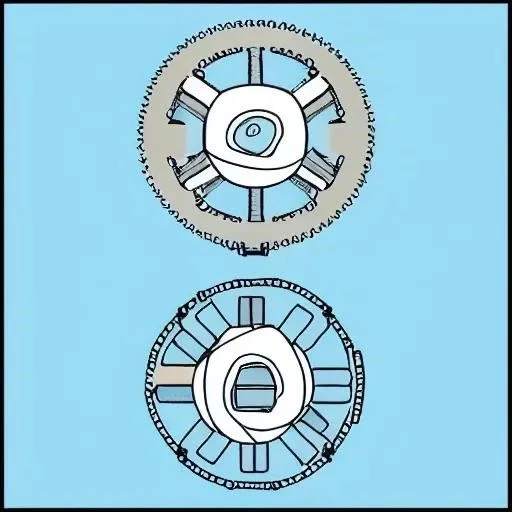Beneath the sleek hood of every modern vehicle, the engine roars to life, promising exhilarating power and impressive speed. Yet, the raw force generated by this mechanical heart would be largely untamed, perhaps even useless, without another equally critical, though often overlooked, component: the car transmission. It is the sophisticated interpreter, the silent conductor that translates the engine’s explosive energy into controllable, drivable motion, ensuring that whether you’re cruising down a highway or navigating a steep incline, your ride remains impeccably smooth and remarkably efficient.
Far from being a mere cog in the machine, the transmission acts as the ultimate intermediary, meticulously managing the delicate dance between power and traction. It dynamically adjusts the engine’s output to the varying demands of the road, effectively determining how much torque reaches the wheels at any given moment. This intricate system, evolving dramatically from its earliest iterations, is not just about moving forward; it’s about optimizing performance, enhancing fuel economy, and ultimately, shaping the very experience of driving itself. Understanding its profound impact is key to appreciating the engineering marvel that propels us daily.
Unveiling the Transmissions: A Quick Guide to Types
As the automotive landscape continues its rapid evolution, understanding the distinct characteristics of various transmission types becomes increasingly vital for both enthusiasts and everyday drivers. Each design offers a unique blend of performance, efficiency, and driving experience, reflecting decades of engineering innovation aimed at perfecting power delivery.
| Feature | Manual Transmission (MT) | Automatic Transmission (AT) | Continuously Variable Transmission (CVT) | Dual-Clutch Transmission (DCT) |
|---|---|---|---|---|
| Description | Driver manually selects gears using a clutch pedal and gear stick. | Automatically shifts gear ratios without driver intervention, often using a torque converter. | Provides an infinite range of gear ratios, smoothly varying them for optimal engine performance. | Utilizes two separate clutches for odd and even gears, pre-selecting the next gear for rapid, seamless shifts. |
| Key Advantage | High driver engagement, direct control, often perceived as more “sporty,” historically better fuel economy. | Effortless driving experience, smooth power delivery, reduced driver fatigue in traffic. | Exceptional fuel efficiency by keeping the engine at its most optimal RPM, incredibly smooth acceleration. | Lightning-fast gear changes, superior efficiency, often found in high-performance and luxury vehicles. |
| Typical Use | Enthusiast cars, some compact economy models, commercial vehicles in specific markets. | The vast majority of modern passenger cars, SUVs, and light trucks globally. | Hybrid vehicles, many mainstream compact and mid-size sedans and crossovers. | Performance-oriented sports cars, luxury sedans, and increasingly in mainstream models for efficiency and driveability. |
| Future Outlook | Niche market, sustained by driving purists, but overall declining in production volume. | Continued refinement with more gears (e.g., 9- and 10-speeds), integration with electrification, and predictive shifting. | Improving power handling, enhanced “step-shift” programming to mimic traditional gears, increasing adoption in hybrids. | Broadening application across vehicle segments, further refinement in shift logic, crucial for electric vehicle multi-speed transmissions. |
For a deeper dive into automotive engineering, consider exploring resources from reputable institutions like SAE International (Society of Automotive Engineers).
The Intricate Mechanics: Core Components and Their Synchronized Dance
At its heart, any transmission, regardless of its type, is a marvel of mechanical engineering, comprising several interconnected components working in harmonious concert. Central to this system are the gear sets, often planetary gears in automatics, or helical gears in manuals. These precisely machined cogs, varying in size and tooth count, are responsible for altering the rotational speed and torque output from the engine. Think of it like a sophisticated bicycle: just as you shift gears to make pedaling easier uphill or faster downhill, the transmission shifts to match the engine’s power delivery to the demands of the road, optimizing both acceleration and fuel economy.
Engaging and disengaging this power is the crucial role of the clutch in manual transmissions, or the torque converter in automatics. The clutch, operated by the driver, physically connects or disconnects the engine from the transmission, allowing for smooth gear changes and preventing engine stall. Conversely, the torque converter, a fluid coupling, uses hydraulic pressure to transfer power, enabling the vehicle to stop while in gear without stalling the engine, an incredibly effective solution for urban driving.
Beyond these primary components, complex systems of shafts, bearings, and synchronizers (in manuals) ensure that gears mesh seamlessly, preventing jarring shifts and protecting the intricate internal machinery. In modern automatics, the sophisticated valve body or electronic control unit (ECU) acts as the transmission’s brain. This intelligent unit meticulously interprets vast streams of sensor data—including vehicle speed, engine RPM, and throttle position—to precisely command hydraulic fluid flow, orchestrating gear shifts with split-second accuracy and remarkable foresight, thereby optimizing both performance and fuel efficiency.
From Mechanical Gears to Digital Commands: The Evolution of Transmission Technology
The journey of the car transmission is a testament to relentless innovation. Early transmissions were simple, robust mechanical systems, demanding significant driver skill. However, the advent of the automatic transmission revolutionized ease of driving, culminating in today’s highly advanced units with eight, ten, or even more gears, often featuring predictive shift logic. “The precision and speed with which modern transmissions operate are simply astounding,” notes Dr. Anya Sharma, a leading automotive engineer specializing in powertrain dynamics. “They’ve transcended mere gear-changing; they’re now integral to vehicle dynamics, safety systems, and overall energy management.”
Looking forward, the landscape of transmission technology is incredibly dynamic. Electric vehicles (EVs), while often employing simpler single-speed transmissions, are beginning to explore multi-speed gearboxes. This advancement aims to enhance efficiency at high speeds and boost torque delivery, a trend already evident in high-performance EVs. It suggests a renewed focus on optimizing electric motor output through sophisticated gearing, proving that even electric powertrains benefit immensely from intelligent power distribution.
Furthermore, integrating insights from AI and machine learning is paving the way for truly adaptive transmissions. These next-generation systems will possess the remarkable ability to learn driver habits and anticipate road conditions, preemptively selecting the optimal gear for any scenario. Imagine a transmission that intuitively knows you’re about to accelerate onto a highway, seamlessly preparing the perfect gear ratio even before your foot fully engages the accelerator. This predictive capability promises an unparalleled level of responsiveness and efficiency.
The future promises transmissions that are not just mechanical marvels but intelligent, self-optimizing systems. Innovations in materials science are leading to lighter, more durable components, while advanced manufacturing techniques are allowing for even tighter tolerances and greater efficiency. The ongoing integration of transmission control units with other vehicle systems, such as advanced driver-assistance systems (ADAS) and navigation, will unlock unprecedented levels of coordination, fundamentally transforming the driving experience into something safer, smoother, and exponentially more intelligent. This isn’t just about shifting gears; it’s about shifting paradigms.






